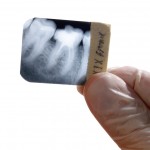
The aetiology of cracked teeth has been attributed to a number of factors including, trauma, parafunctional forces, restorative materials and procedures. The diagnosis and management of cracks is not always straightforward and depends on symptoms, location and the extend of the crack. Teeth with extensive cracks are likely to require root canal treatment.
The aim of this review was to evaluate the success and survival rate of endodontically treated cracked posterior teeth and to assess the preoperative factors that affect teeth survival.
Methods
Searches were conducted in the PubMed, Scopus and Cochrane Library databases with no language or date restrictions. Clinical trials, case-control studies, cross- sectional studies, or cohort studies and case series of endodontic treatment of posterior permanent cracked teeth with closed apex involving at least 10 patients with at least 1 year after intervention were considered. Two reviewers independently screened and selected studies and assessed risk of bias with disagreements being resolved by a third reviewer. The Newcastle-Ottawa Scale was used to assess risk of bias. outcome measures were based on binary data, ie, success/failure, survival/extraction.
Results
- 7 retrospective studies involving 674 patients were included.
- Studies were conducted in Korea, Singapore and the USA.
- Meta-analyses were conducted for survival and success rates at 1 year.
| 1 year | No. of studies | Mean rate (95%CI) |
| Survival rate | 7 | 88% (81% – 94%) |
| Success rate | 3 | 82% (78% – 86%) |
- The presence of periodontal pockets increased the risk of extraction by 11% with survival rates in patients with no periodontal pockets = 97% (93% – 99%) [5 studies].
- Insufficient data was available to assess the relation of age and final restoration in treatment survival.
Conclusions
The authors concluded: –
root canal treatment in cracked posterior teeth can be considered a suitable treatment option. The presence of an associated periodontal pocket results in a lower survival rate.
Comments
Earlier this year we looked at another review on this topic (Dental Elf – 17th Jan 2020). That review only included 4 retrospective cohort studies all of which are included in this new review. The current review has included 7 studies all of which used retrospective data with patients being recalled for evaluation. This means there is potential for selection and attrition bias. While success was assessed using clinical and radiographic examination outcome assessment was only carried out by independent blinded clinicians in 2 of the 7 studies. Although outcomes assessment was reported between 1-5 years only outcomes at 1 year are reported with this review reported a lower survival rate of 88% (95%CI; 81% – 94%) compared with the earlier review’s figure of 93.4% (95%CI, 81.9–97.8%). The findings of both reviews suggest acceptable survival rates for survival however there are limitations with the quality of the available studies and ideally higher quality prospective studies are needed to clarify survival rates and factors affecting outcomes. In 2017 the American Association for Endodontists produces guidance to assist in standardising future studies.
Links
Primary Paper
Olivieri JG, Elmsmari F, Miró Q, et al. Outcome and Survival of Endodontically Treated Cracked Posterior Permanent Teeth: A Systematic Review and Meta-analysis. J Endod. 2020;46(4):455–463. doi:10.1016/j.joen.2020.01.006
Other references
American Association for Endodontists- Guidelines for the Methodology of Cracked Tooth Studies
Dental Elf – 17th Jan 2020
